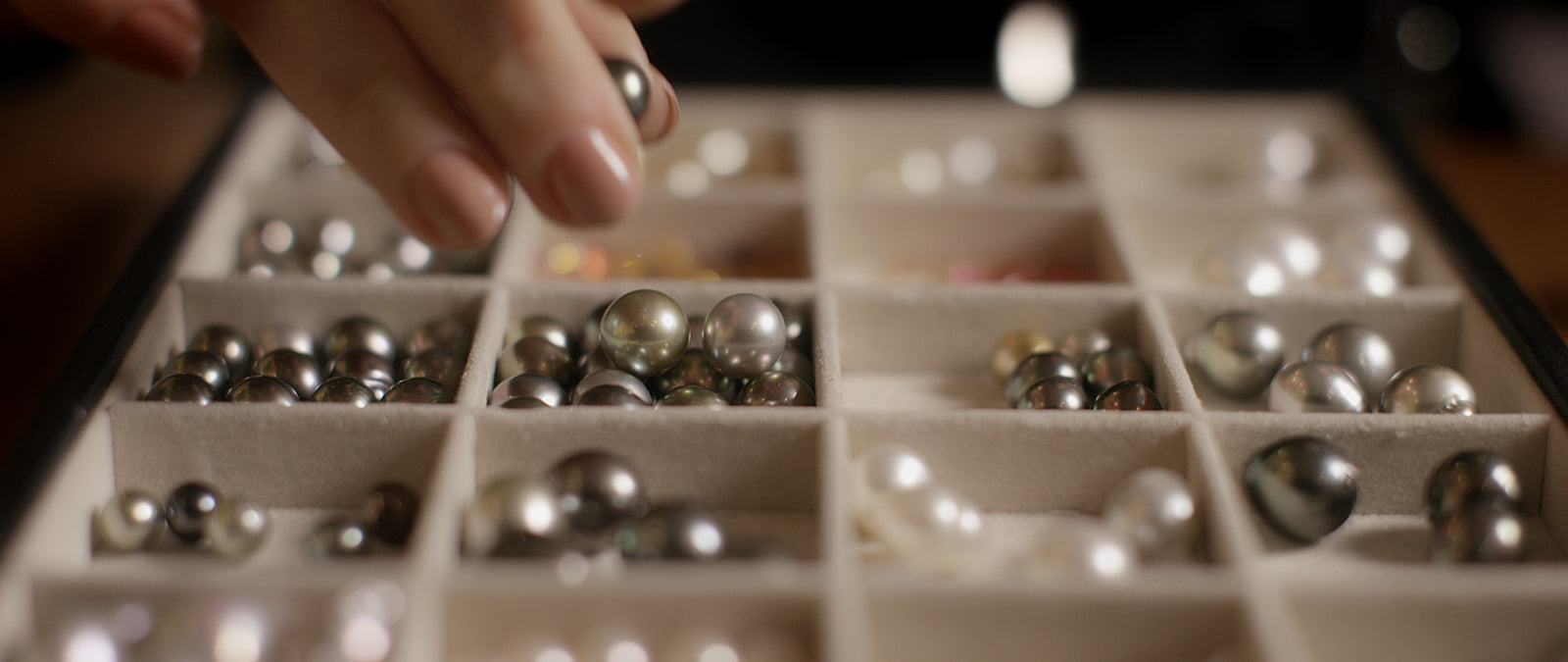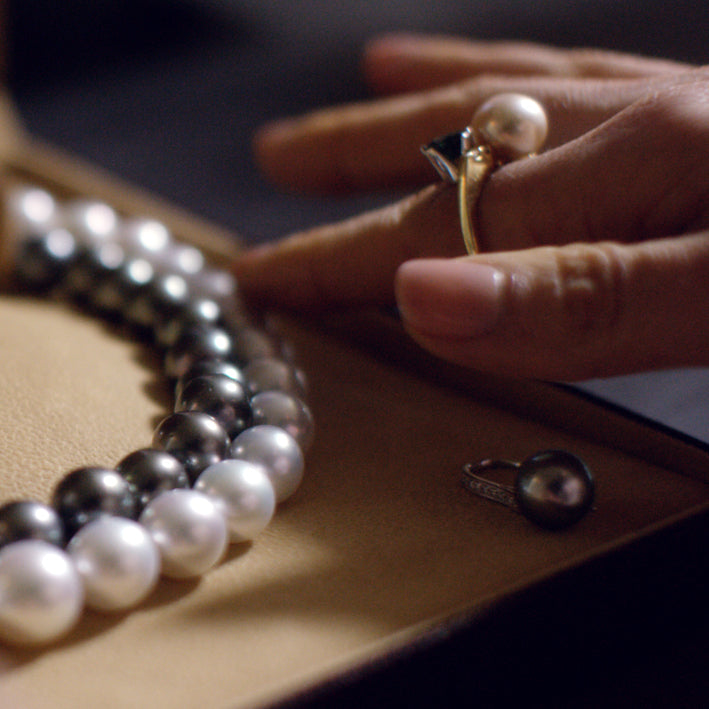
Did you know there are two main types of cultured pearls? There are seawater and freshwater cultured pearls just as in the natural pearl realm. First up let’s investigate sea water cultured pearls.
Not only are oysters delightful to eat, they also produce the most naturally beautiful gem known to mankind. Pearl production is the reaction of the mollusc in order to protect its wellbeing, we could also call it self-preservation.

The beginning of the road – Cultured seawater or oyster pearls start life when a technician implants a nucleus and a section of epithelial cells into a pearl bearing oyster. The oyster needs to be 3 years old in order to withstand the operation, and as an oyster is kept up till the age of 7 years in the farm, this means there is usually only one pearl produced per oyster.

Only the best will do When the Mise-Nishikawa method of pearl culturing was introduced, i.e. the process of aiding a pearl bearing mollusc to make a pearl, they discovered that the best nucleus to use was a round bead made of mother of pearl from a freshwater mollusc called a mullette or pig toe, a thick shelled mussel which can be cut into squares which can then be shaped into round beads of different dimensions. This particular shell is used because it has the perfect specific density in order for the oyster not to spit it out of hand. Nowadays most nuclei are made from resin.

Hmmmm it is tough to be the best Out of 1000 oysters that are seeded, 500 do not make it to pearl production, 200 produce rejected pearls which are very marked or with large dull patches that look like a dead fish eye, in short something you would not want to wear. 250 are pearls of marketable quality. 50 are top quality pearls. This ratio gives the reasoning behind the price calculation of a cultured oyster pearl. The adage “you pay for what you get” has never been truer.
For those who like percentages here we go:
- 50% die or eject nucleus.
- 25% produce pearls of marketable quality.
- 20% are rejected pearls.
- Only 5% produce top quality pearls.
Interested in knowing the nitty gritty of the culturing process see you on our next episode.
Follow us on Instagram, Facebook and Twitter for more inspiration.



















